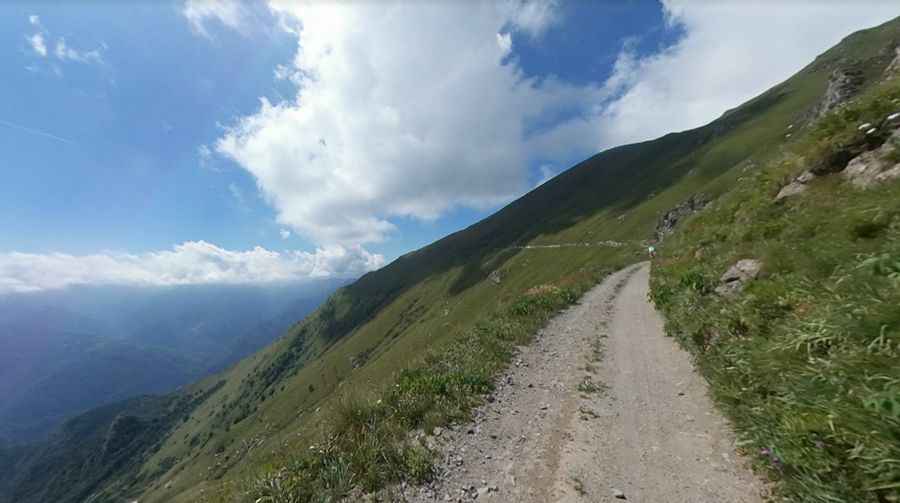Driving Strada dei Cannoni, a military mountain road in Italy
Strada dei Cannoni is a military road located on the northern part of Italy. The road climbs up from 680m to 2.287m (7,503ft) above sea level.

Is Strada dei Cannoni paved?
Set high in the Province of Cuneo on the northwestern part of the country, the road, also known as Varaita-Maira-Kammstraße, is mostly unpaved (75%). This course designed for military purposes today is a fascinating journey for lovers of nature. The road area is currently owned by the military property. Today it is recognized for its spectacular of its path, allowing you to follow the watershed between the valleys of Maira and Varaita enjoying magnificent views of mountain ranges and the head of the two valleys near the Monviso. The drive offers amazing views of the Maritime Alps and the Cottian Alps.
How long is Strada dei Cannoni?
Running across the watershed between Valle Maira and Valle Varaita, Strada dei Cannoni (Road of the Cannons) is 56km (34 miles) long and runs from Colletta di Rossana, in the territory of Busca, at 680m (2,230ft) above sea level to Colle della Bicocca, in the Municipality of Elva, at 2.287m (7,503ft) above sea level.
Is Strada dei Cannoni open?
According to several sources, from July to September, the road is closed on Saturdays, Sundays and public holidays from 9 to18 hours. At nights, the road is also closed from 21 night to 6 morning. In winters, the road is usually impassable due the snow.
Is Strada dei Cannoni challenging?
Unique, difficult and hardly frequented, the drive is a real off-road adventure for nerve-racking off-roaders. The little-used route is partly in very bad condition and should only be tackled by experienced off-roaders in good weather conditions. Coarse gravel, hairpin bends and some steep inclines require full attention along the entire route.
The Ancient Road of the Piedmontese Army: A Strategic Pass through the Alps
This ancient road underwent remodeling in the 1930s, tracing an itinerary initially built by engineers of the Piedmontese army in 1744 to impede the Franco-Spanish advance. Commissioned by Carlo Emanuele III during the War of the Austrian Succession, the road aimed to provide a faster and safer passage over the Alps for troops. Starting from Casteldelfino in the Varaita Valley, it led to the Sampeyre hill, descended to Stroppo, continued to Marmora through the Colle dell'Encucetta, and reached the Valley of the Force in Demonte. It then passed through Barricades Pietraporzio in the Stura Valley and the plain of Gardetta. Despite its construction, the road was never utilized in battle due to the absence of fighting near the town of Cuneo.
From Napoleon's Trail to Modern Remnants: The Evolution of a Historic Route
The upper portion of the road transitioned to civilian use over time, while the section crossing the River Maira near Stroppo gradually disappeared with the construction of new roadways. This segment, including a portion of trail built by Napoleon's army, was once known as the "Route Napoleon" due to a legend claiming the emperor's passage. Today, this track has largely vanished, and the road, named after its original purpose, was built in 1893 by the Army Corps of Engineers on the ridge between the Valle Maira and Varaita Valley, extending from Colletta di Rossana to Col Bicocca.
Engineering Efforts and Modernization: Revitalizing a Historic Mountain Pass
The road underwent significant maintenance in 1938 when the Engineering Department of Cuneo received orders to adapt the existing mule track for motorized transit. Initially aiming to minimize costs, the project expanded to transform the road into a "type C" road. Contracted by the Sorge company, the work was completed in 1941 with the assistance of military manpower alongside civilian efforts. In 2014, a two-kilometer stretch connecting provincial roads in Lemma and Valmala was paved, creating an ideal loop for cycling routes. Along the path, many obsolete military barracks remain as remnants of its historical significance.
Pic: Renato Cane